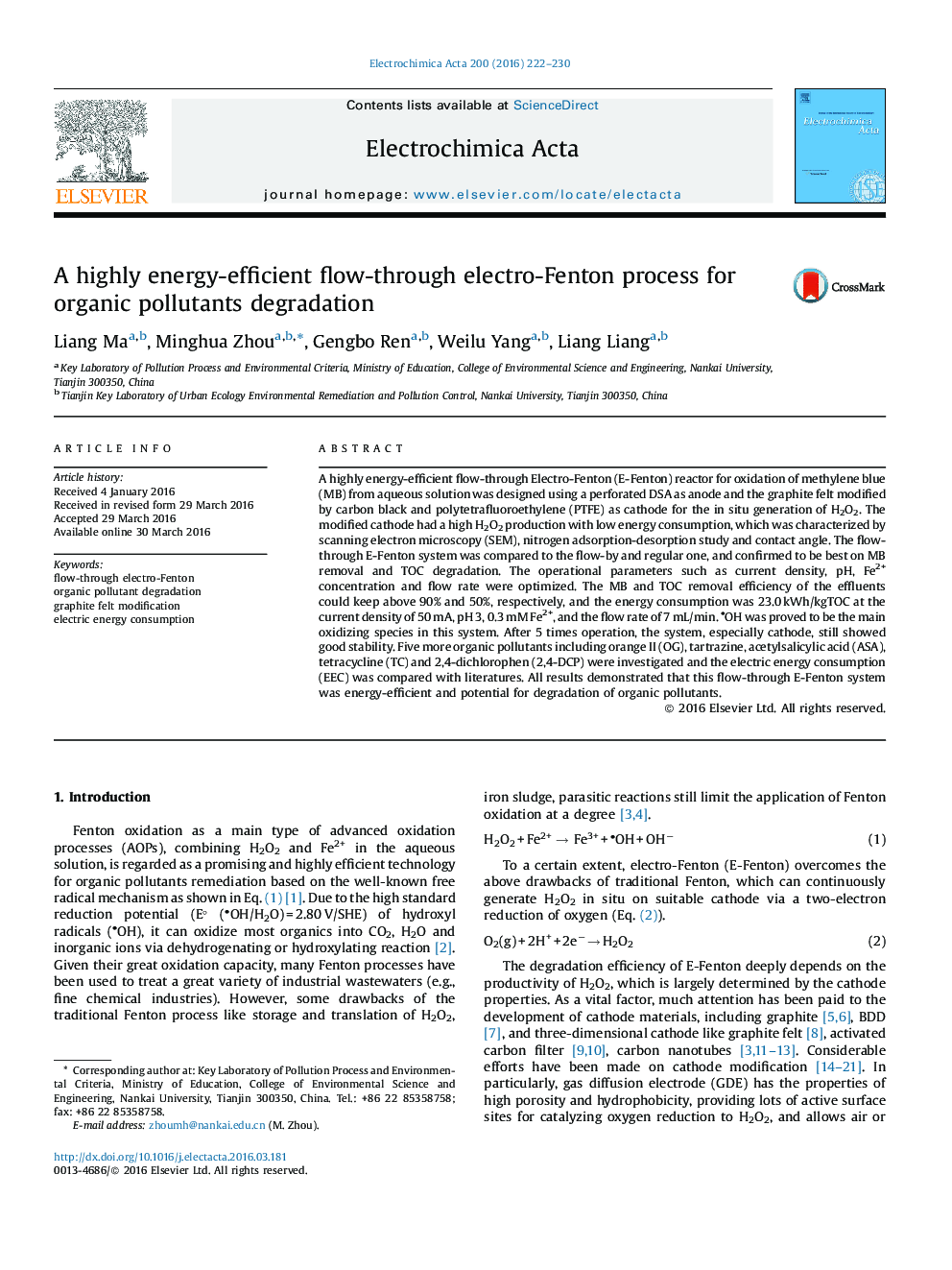| Article ID | Journal | Published Year | Pages | File Type |
|---|---|---|---|---|
| 183179 | Electrochimica Acta | 2016 | 9 Pages |
•A highly energy-efficient flow-through electro-Fenton reactor was designed.•It had high H2O2 yield and low energy consumption for organic pollutants degradation.•The effect of operational parameters was optimized and possible process mechanism was studied.•The novel system performed wide practicability and potential for organic pollutants degradation.
A highly energy-efficient flow-through Electro-Fenton (E-Fenton) reactor for oxidation of methylene blue (MB) from aqueous solution was designed using a perforated DSA as anode and the graphite felt modified by carbon black and polytetrafluoroethylene (PTFE) as cathode for the in situ generation of H2O2. The modified cathode had a high H2O2 production with low energy consumption, which was characterized by scanning electron microscopy (SEM), nitrogen adsorption-desorption study and contact angle. The flow-through E-Fenton system was compared to the flow-by and regular one, and confirmed to be best on MB removal and TOC degradation. The operational parameters such as current density, pH, Fe2+ concentration and flow rate were optimized. The MB and TOC removal efficiency of the effluents could keep above 90% and 50%, respectively, and the energy consumption was 23.0 kWh/kgTOC at the current density of 50 mA, pH 3, 0.3 mM Fe2+, and the flow rate of 7 mL/min. OH was proved to be the main oxidizing species in this system. After 5 times operation, the system, especially cathode, still showed good stability. Five more organic pollutants including orange II (OG), tartrazine, acetylsalicylic acid (ASA), tetracycline (TC) and 2,4-dichlorophen (2,4-DCP) were investigated and the electric energy consumption (EEC) was compared with literatures. All results demonstrated that this flow-through E-Fenton system was energy-efficient and potential for degradation of organic pollutants.
